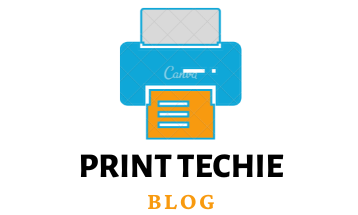Sublimation is a unique process that allows you to transfer images or designs onto metal, glass, ceramic and many other surfaces. It is a great way to personalize items or create unique gifts and artwork. With this technique, you can create stunning visuals by incorporating vibrant colours, intricate designs, photographs and more. Sublimation is a perfect way to make any product unique and special, whether for your use or offering it as part of your business. But what can you sublimate on? We will discuss some of the materials that can be sublimated on, and we will also provide some tips and tricks for achieving the best results.
What Material Can You Sublimate On?
Sublimation works on a wide range of materials, including cotton, wood, glass, canvas and fabric. It is important to note that not all materials are suitable for sublimation, and some may require special preparation or primers before they can be printed. It is always best to check with the manufacturer to ensure that the material you are working with is sublimation-friendly. Here are some popular materials that you can sublimate:
Can you sublimate on cotton?
Yes, you can sublimate on cotton. Before printing, you will need to pre-press the fabric to ensure that the ink adheres properly. Additionally, some fabrics may require a pretreatment solution to be sprayed on before printing for optimal results. Check with the manufacturer for their recommended pretreatment solution before attempting to sublimate on cotton.
Can you sublimate on wood?
Absolutely! Sublimation printing on wood is possible, but the process varies from other materials. Before you start sublimating, sand down the wood surface for optimal ink adhesion. Even though it takes a few extra steps initially, properly prepping your wooden substrate will enable you to achieve amazing results with sublimation. Additionally, you may need to use a primer, such as a clear coat, to help the ink adhere. Also, check with the manufacturer for their recommended priming techniques.
Can you sublimate it on canvas?
Sublimation is the transition of a substance from the solid to the gas phase without passing through the liquid phase. So by definition, it is possible to sublimate on canvas. The only limitation would be whether or not your chosen material could withstand high temperatures without melting or burning.
Can you sublimate on rayon?
Sublimation onto rayon is also achievable! Rayon is a synthetic fabric made from cellulose, so it has a natural affinity for dye. It’s also very soft and drapes well, making it a popular choice for garments and home decor items.
Can you sublimate on glass?
Next, we have a question about glass sublimation. Sublimation onto glass is entirely possible. The key is to use a material that has a very low boiling point, such as ethanol or mercury. By heating the material until it vaporizes, you can create a thin film of vapour on the surface of the glass. The film will then cool and solidify, forming a permanent coating on the glass.
can you sublimate on vinyl?
if you are planning to sublimate on vinyl but don’t know if it is a good idea, then we are here to help you. Technically Yes, you can use vinyl materials for sublimation. When sublimating onto vinyl, it is important to ensure that the material has been properly prepared beforehand. This means ensuring that the vinyl is clean and free of contaminants, as these can interfere with the sublimation process. To get the best results, it is essential to utilize a specially formulated primer for sublimation.
Can you sublimate on nylon?
Yes, you can sublimate on nylon. It’s a great surface to sublimate on because the fabric is heat-resistant and doesn’t scorch or melt as some other materials do. Plus, the colours remain bright and vibrant after sublimation. So if you’re looking for a versatile fabric that can withstand high temperatures, nylon is a good option.
Can you sublimate on regular mugs?
Sublimation is a great way to customize your regular mugs with beautiful designs. However, it is important to note that the mug needs to be specially coated with a polyester coating to ensure that the ink adheres properly. Moreover, mugs can be heated prior to sublimation for faster ink bonding. Follow the manufacturer’s instructions carefully when sublimating on mugs to get the best results.
FAQs
How long does it take to sublimate a design?
The time required for the process can vary depending on the size of the project and the material being used. Generally speaking, sublimation takes about one to two minutes per square inch. So a design that is 6 square inches in size could take up to 12 minutes.
What is the best temperature for sublimation?
The ideal temperature for most sublimation projects is 400°F. However, depending on the material, you’re using and the type of ink, this temperature may vary. Be sure to check with the manufacturer for their recommended temperature settings.
How do I clean sublimated materials?
Sublimated materials can usually be cleaned with mild soap and water. Avoid using strong detergents or abrasive materials, as these can damage the design. Also, avoid scrubbing too hard, as this could also cause fading or peeling.
Is it necessary to pre-treat fabric before sublimating?
Yes, some fabrics may require a pretreatment solution to be sprayed on before printing for optimal results. Check with the manufacturer for their recommended pretreatment solution before attempting to sublimate on fabric.
What happens if I don’t use a primer before sublimation?
Without the proper primer, the ink will likely peel or flake off the material. Additionally, the colours may not be as vibrant or last as long. Therefore, it is important to use the recommended primer for optimal results.
Can I sublimate on both sides of a material?
Yes, you can! However, it is important to remember that sublimating on both sides simultaneously may result in uneven results. To ensure a successful project, we recommend sublimating on one side at a time.
Sublimation is a wonderful technique to craft vibrant and long-lasting prints on different materials. With the right materials and techniques, You can now add beautiful designs to vinyl, nylon, mugs and other fabrics with sublimation printing! However, it is important to note that some materials may require a pretreatment solution or primer before printing for optimal results. Also, make sure to follow the manufacturer’s instructions carefully when attempting to sublimate to achieve the best results. Furthermore, when you use the correct temperature settings, primers and other necessary components to limit mistakes during your sublimation process. The results will be sure to astound and persist for many years.

